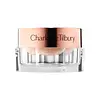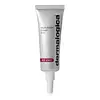What's inside
What's inside
 Key Ingredients
Key Ingredients

 Benefits
Benefits

 Concerns
Concerns

 Ingredients Side-by-side
Ingredients Side-by-side

Water
Skin ConditioningCaprylic/Capric Triglyceride
MaskingButylene Glycol
HumectantPolysorbate 60
EmulsifyingOlus Oil
EmollientPEG-7 Glyceryl Cocoate
EmulsifyingGlycerin
HumectantButyrospermum Parkii Butter
Skin ConditioningPEG-8
HumectantEthylhexyl Stearate
EmollientDicaprylyl Ether
EmollientSorbitan Stearate
EmulsifyingHydroxyethyl Acrylate/Sodium Acryloyldimethyl Taurate Copolymer
Emulsion StabilisingOlive Oil PEG-7 Esters
EmollientPhenoxyethanol
PreservativeSaccharide Isomerate
HumectantC12-16 Alcohols
EmollientCera Alba
EmollientGlyceryl Stearate
EmollientHydrogenated Castor Oil
EmollientSqualane
EmollientEthylhexylglycerin
Skin ConditioningChlorphenesin
AntimicrobialHydrogenated Lecithin
EmulsifyingHydrolyzed Rice Protein
Skin ConditioningPalmitic Acid
EmollientXanthan Gum
EmulsifyingChondrus Crispus Extract
Skin ConditioningDisodium EDTA
Helianthus Annuus Seed Oil
EmollientPolysorbate 20
EmulsifyingSorbitan Isostearate
EmulsifyingSodium Hydroxide
BufferingGlycine Soja Protein
EmulsifyingSuperoxide Dismutase
AntioxidantCitric Acid
BufferingHydroxypropyl Cyclodextrin
MaskingTocopherol
AntioxidantSodium Citrate
BufferingSodium Benzoate
MaskingSodium PCA
HumectantAscorbyl Palmitate
AntioxidantDaphne Odora Callus Extract
Skin ProtectingSodium Dextran Sulfate
Gel FormingNicotiana Sylvestris Leaf Cell Culture
Skin ConditioningAluminum Hydroxide
EmollientRetinol
Skin ConditioningPlumeria Rubra Flower Extract
Skin ConditioningBorago Officinalis Seed Oil
EmollientTocopheryl Acetate
AntioxidantAscorbic Acid
AntioxidantLecithin
EmollientPotassium Sorbate
PreservativeRetinyl Palmitate
Skin ConditioningAscorbyl Tetraisopalmitate
AntioxidantCI 77891
Cosmetic ColorantIron Oxides
Water, Caprylic/Capric Triglyceride, Butylene Glycol, Polysorbate 60, Olus Oil, PEG-7 Glyceryl Cocoate, Glycerin, Butyrospermum Parkii Butter, PEG-8, Ethylhexyl Stearate, Dicaprylyl Ether, Sorbitan Stearate, Hydroxyethyl Acrylate/Sodium Acryloyldimethyl Taurate Copolymer, Olive Oil PEG-7 Esters, Phenoxyethanol, Saccharide Isomerate, C12-16 Alcohols, Cera Alba, Glyceryl Stearate, Hydrogenated Castor Oil, Squalane, Ethylhexylglycerin, Chlorphenesin, Hydrogenated Lecithin, Hydrolyzed Rice Protein, Palmitic Acid, Xanthan Gum, Chondrus Crispus Extract, Disodium EDTA, Helianthus Annuus Seed Oil, Polysorbate 20, Sorbitan Isostearate, Sodium Hydroxide, Glycine Soja Protein, Superoxide Dismutase, Citric Acid, Hydroxypropyl Cyclodextrin, Tocopherol, Sodium Citrate, Sodium Benzoate, Sodium PCA, Ascorbyl Palmitate, Daphne Odora Callus Extract, Sodium Dextran Sulfate, Nicotiana Sylvestris Leaf Cell Culture, Aluminum Hydroxide, Retinol, Plumeria Rubra Flower Extract, Borago Officinalis Seed Oil, Tocopheryl Acetate, Ascorbic Acid, Lecithin, Potassium Sorbate, Retinyl Palmitate, Ascorbyl Tetraisopalmitate, CI 77891, Iron Oxides
Cyclopentasiloxane
EmollientBis-Diglyceryl Polyacyladipate-2
EmollientDimethicone Crosspolymer
Emulsion StabilisingCetyl Ethylhexanoate
EmollientPolylactic Acid
AbrasiveTocopheryl Acetate
AntioxidantCaprylic/Capric Triglyceride
MaskingCamellia Sinensis Leaf Extract
AntimicrobialChamomilla Recutita Extract
Skin ConditioningSpilanthes Acmella Flower Extract
Skin ConditioningCorallina Officinalis Extract
Skin ConditioningCarthamus Tinctorius Seed Oil
MaskingVitis Vinifera Seed Oil
EmollientAscorbic Acid
AntioxidantGlycyrrhetinic Acid
Skin ConditioningBoron Nitride
AbsorbentRetinyl Palmitate
Skin ConditioningTocopherol
AntioxidantHydrogenated Soybean Oil
EmollientBenzyl Alcohol
PerfumingAroma
Cyclopentasiloxane, Bis-Diglyceryl Polyacyladipate-2, Dimethicone Crosspolymer, Cetyl Ethylhexanoate, Polylactic Acid, Tocopheryl Acetate, Caprylic/Capric Triglyceride, Camellia Sinensis Leaf Extract, Chamomilla Recutita Extract, Spilanthes Acmella Flower Extract, Corallina Officinalis Extract, Carthamus Tinctorius Seed Oil, Vitis Vinifera Seed Oil, Ascorbic Acid, Glycyrrhetinic Acid, Boron Nitride, Retinyl Palmitate, Tocopherol, Hydrogenated Soybean Oil, Benzyl Alcohol, Aroma
 Reviews
Reviews

Ingredients Explained
These ingredients are found in both products.
Ingredients higher up in an ingredient list are typically present in a larger amount.
Ascorbic Acid is is pure Vitamin C. This form makes up the largest amount of vitamin C found naturally in our skin.
Not only is vitamin C great for your overall health and immune system, it also has plenty of benefits on your skin.
Vitamin C is best used for brightening skin. It improves dark spots, acne scars, and hyperpigmentation. This is because it blocks the process of skin darkening when exposed to UV.
Remember: Vitamin C should not replace sunscreen!
Your skin uses vitamin C to build collagen. Collagen is one key component in having a strong skin barrier and plump skin. Vitamin C also plays a role in regulating collagen, thus making it effective in improving wrinkles and fine lines.
Ascorbic acid shows potent antioxidant activity. As an antioxidant, it helps fight free-radicals. Free-radicals are molecules that may damage your skin cells. These antioxidants also protect skin against UV damage.
The best formulations include Vitamin E and/or ferulic acid. These two ingredients help stabilize and provide a boost in the benefits of ascorbic acid. This is because ascorbic acid becomes unstable when exposed to UV and air. In fact, you can tell your ascorbic acid has oxidized when it turns an orange-yellow color.
Ascorbic acid is generally compatible with other ingredients. However, using ascorbic acid with other active ingredients might cause irritation. Two ingredients: copper ions and benzoyl peroxide, will inactivate ascorbic acid completely.
Read more about other types of Vitamin C:
Foods rich with vitamin C include oranges, strawberries, broccoli, bell peppers, and more. When consuming Vitamin C, your skin receives a portion of the nutrients.
Learn more about Ascorbic AcidThis ingredient is an emollient, solvent, and texture enhancer. It is considered a skin-softener by helping the skin prevent moisture loss.
It helps thicken a product's formula and makes it easier to spread by dissolving clumping compounds.
Caprylic Triglyceride is made by combining glycerin with coconut oil, forming a clear liquid.
While there is an assumption Caprylic Triglyceride can clog pores due to it being derived from coconut oil, there is no research supporting this.
Learn more about Caprylic/Capric TriglycerideRetinyl palmitate is a form of retinoid. Retinoids are the superstar class of anti-aging ingredients that include tretinoin and retinol.
This particular ingredient has had a bumpy year with its rise and fall in popularity.
First, Retinyl palmitate is created from palmitic acid and retinol. It is a retinol ester and considered one of the weaker forms of retinoid.
This is because all retinoids have to be converted to Tretinoin, AKA retinoic acid. Retinyl Palmitate is pretty far down the line and has to go through multiple conversions before its effects are seen.
Due to this long and ineffective conversion line, the benefits of Retinyl Palmitate are debated.
Studies show Retinyl Palmitate to help:
Dermatologists say this ingredient is ineffective because it isn't used in high enough concentrations in cosmetics.
This ingredient used to be found in sunscreens to boost the efficacy of sunscreen filters.
The downfall of Retinyl Palmitate was due to released reports about the ingredient being correlated to sun damage and skin tumors.
While there is a study showing this ingredient to cause DNA damage when exposed to UV-A, there is no concrete proof of it being linked to skin cancer. It is safe to use when used correctly.
All retinoids increase your skin's sensitivity to the sun in the first few months of usage. Be especially careful with reapplying sunscreen when using any form of retinoid.
Currently, this ingredient is still allowed in cosmetics all over the world. In Canada, cosmetics must have a warning label stating the product to contain Retinyl Palmitate
Fun fact: This ingredient is often added to low-fat milk to increase the levels of Vitamin A.
Learn more about Retinyl PalmitateTocopherol (also known as Vitamin E) is a common antioxidant used to help protect the skin from free-radicals and strengthen the skin barrier. It's also fat soluble - this means our skin is great at absorbing it.
Vitamin E also helps keep your natural skin lipids healthy. Your lipid skin barrier naturally consists of lipids, ceramides, and fatty acids. Vitamin E offers extra protection for your skin’s lipid barrier, keeping your skin healthy and nourished.
Another benefit is a bit of UV protection. Vitamin E helps reduce the damage caused by UVB rays. (It should not replace your sunscreen). Combining it with Vitamin C can decrease sunburned cells and hyperpigmentation after UV exposure.
You might have noticed Vitamin E + C often paired together. This is because it is great at stabilizing Vitamin C. Using the two together helps increase the effectiveness of both ingredients.
There are often claims that Vitamin E can reduce/prevent scarring, but these claims haven't been confirmed by scientific research.
Learn more about TocopherolTocopheryl Acetate is AKA Vitamin E. It is an antioxidant and protects your skin from free radicals. Free radicals damage the skin by breaking down collagen.
One study found using Tocopheryl Acetate with Vitamin C decreased the number of sunburned cells.
Tocopheryl Acetate is commonly found in both skincare and dietary supplements.
Learn more about Tocopheryl Acetate